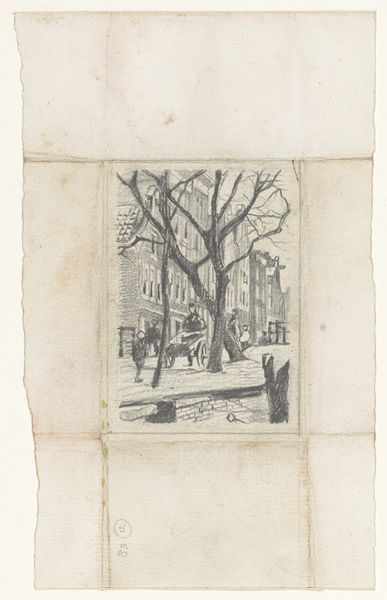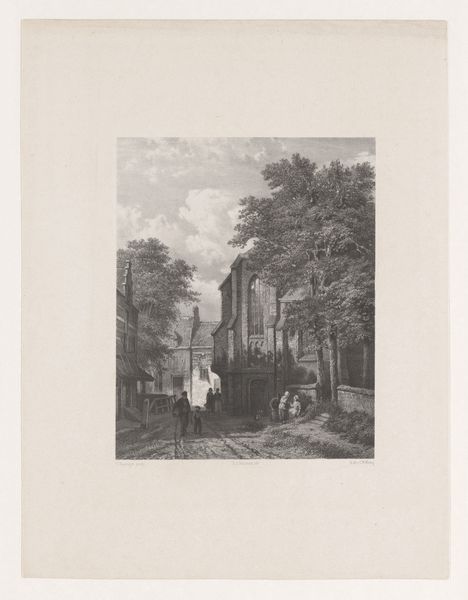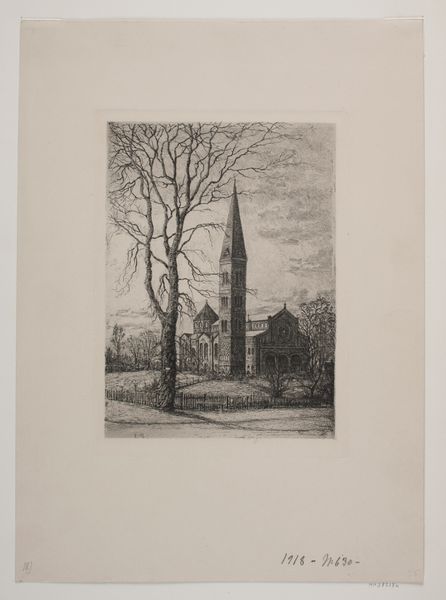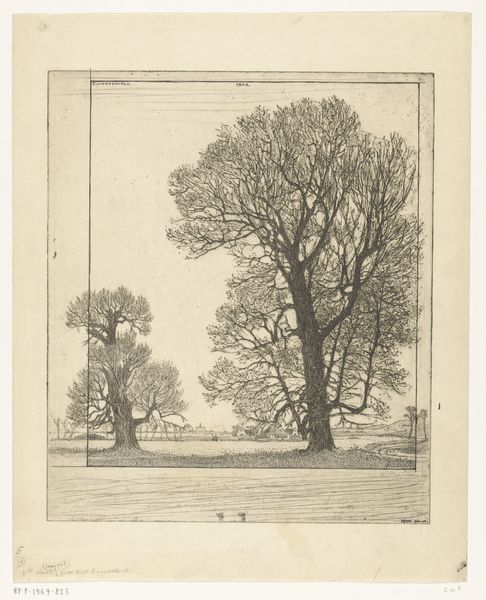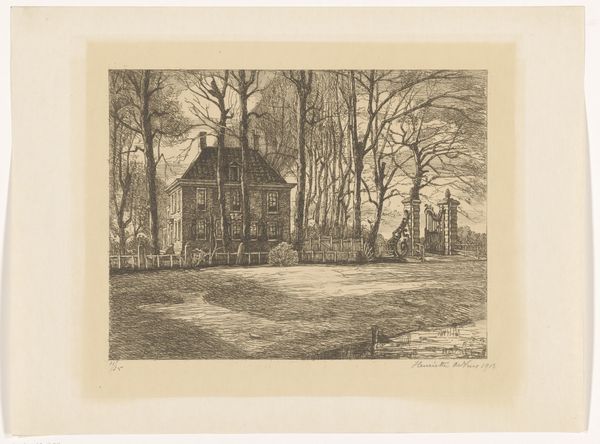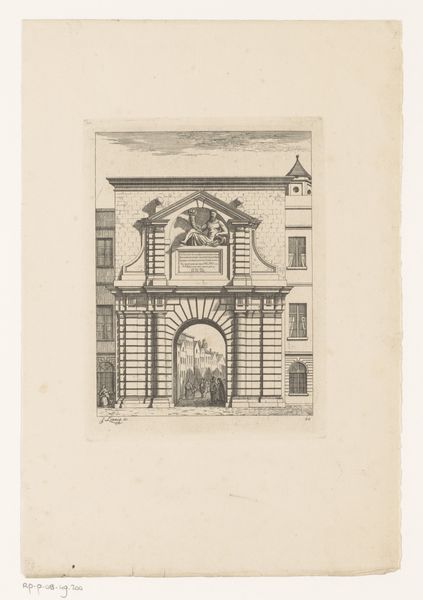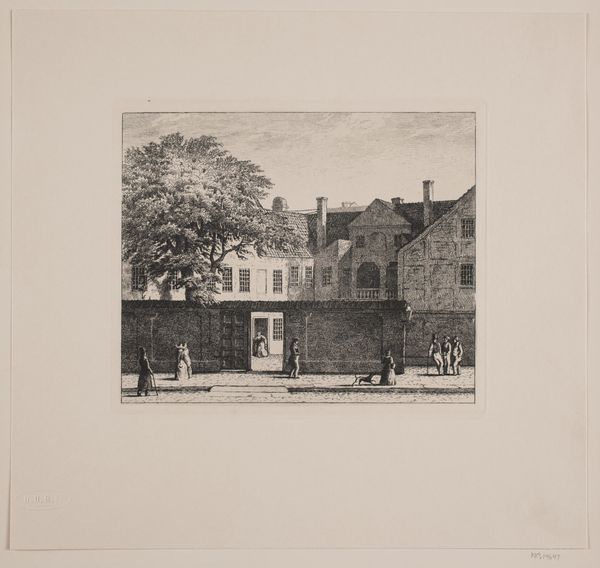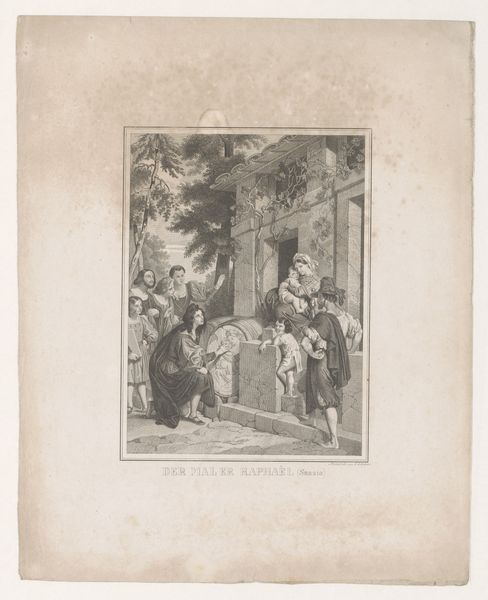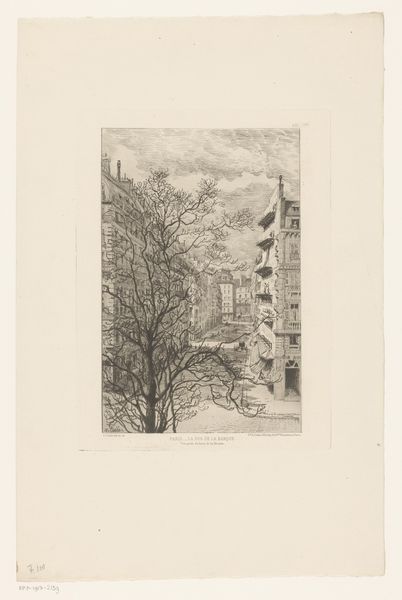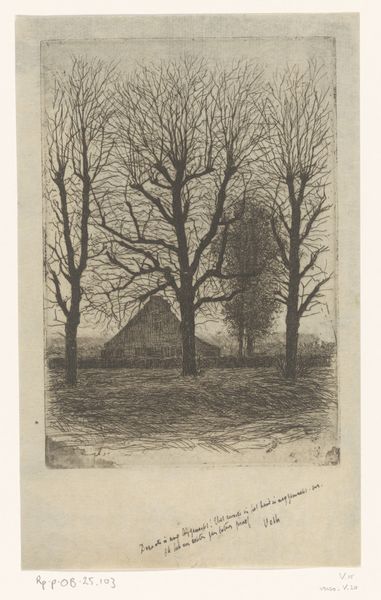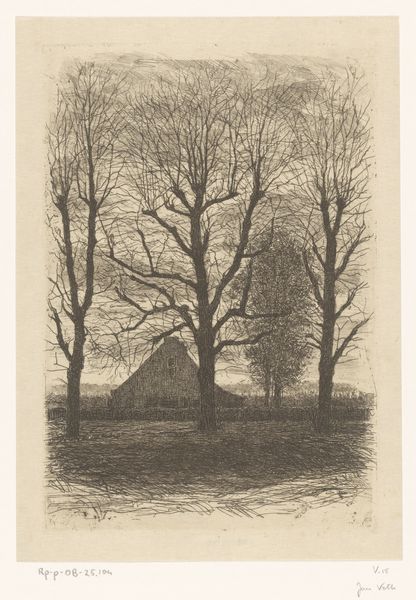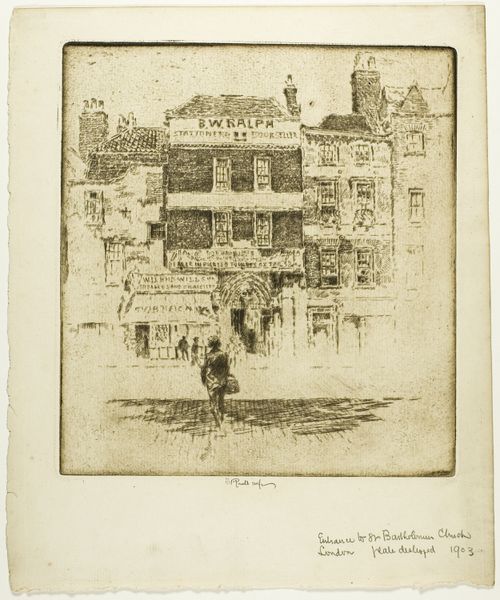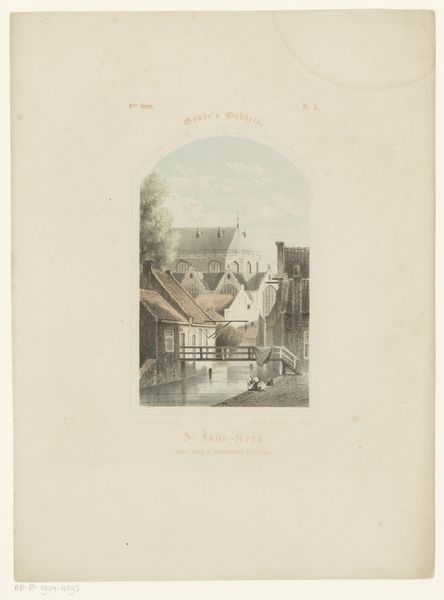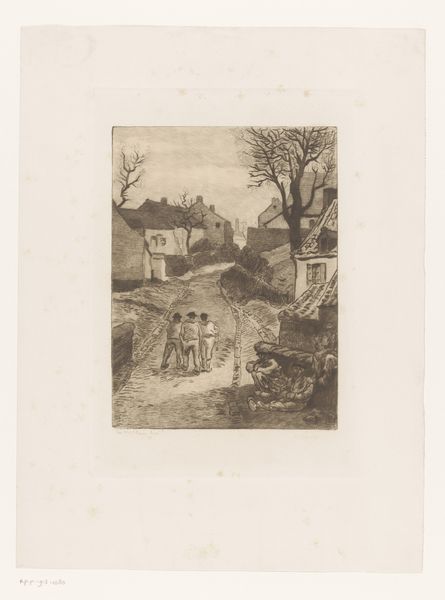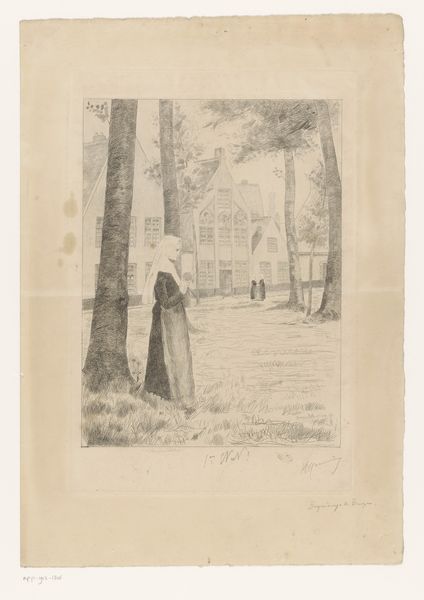
print, etching
#
ink painting
# print
#
etching
#
landscape
#
etching
Dimensions: 273 mm (height) x 205 mm (width) (plademaal)
Curator: This is Adolph Larsen's etching, "Bakkehuset," created between 1904 and 1905. The print features a landscape of the Bakkehuset building itself, bordered by portraits and silhouette details. Editor: It's surprisingly detailed. The contrast between the dark lines and the pale paper gives it an almost ghostly quality, don’t you think? A kind of somber beauty. Curator: Absolutely. Etching, as a process, requires careful planning and execution. We’re seeing the result of Larsen carefully applying acid to a metal plate, controlling the depth and thickness of each line. He’s really mastering the tonal variations here. It speaks to a time-consuming process and skilled craftsmanship. Editor: And considering Bakkehuset's history as a literary salon—a place of intellectual and artistic exchange for figures like Adam Oehlenschläger and Nicolai Grundtvig—the print serves as both documentation and a symbolic encapsulation of cultural memory. These silhouettes—of Knud Lyne Rahbek and his wife Kamma—underscore that social and intellectual heritage. Curator: Exactly! Consider how this print also functions in the art market of the time. The reproductive quality of printmaking allowed for wider distribution. Were these affordable keepsakes? How did owning an image of a cultural landmark impact identity or social capital at that moment in history? Editor: Interesting point! I’m also struck by what isn't represented. Who were the untold stories from the space? How does class intersect with access to cultural havens like this? These absences speak volumes. Curator: I agree. There’s so much here when we start to break down its means of production alongside the image and who could obtain one. The skill of the etcher is matched only by its availability as a printed artifact. Editor: Definitely a piece that bridges art history with ongoing cultural dialogues. It's beautiful, detailed, but demands critical engagement to truly understand its meaning.
Comments
No comments
Be the first to comment and join the conversation on the ultimate creative platform.
